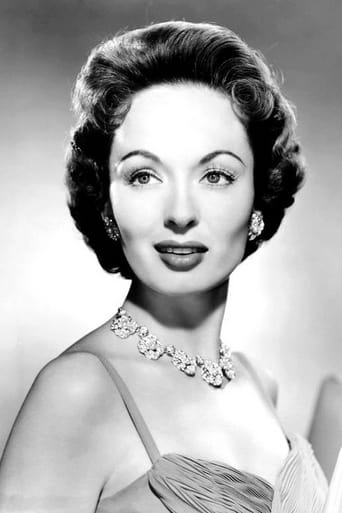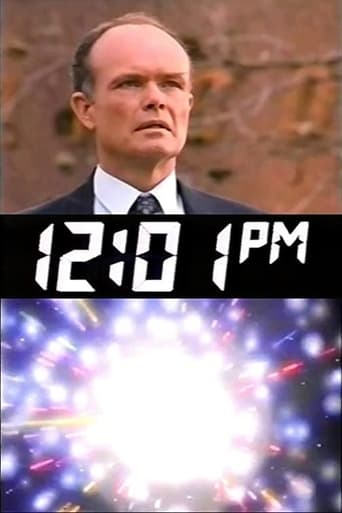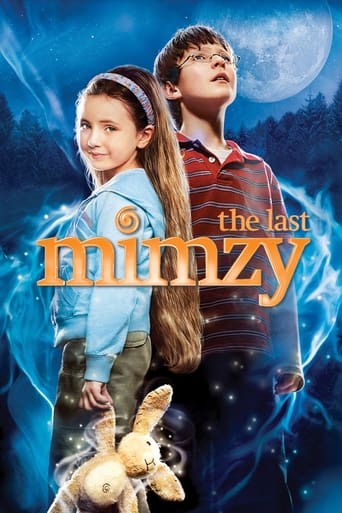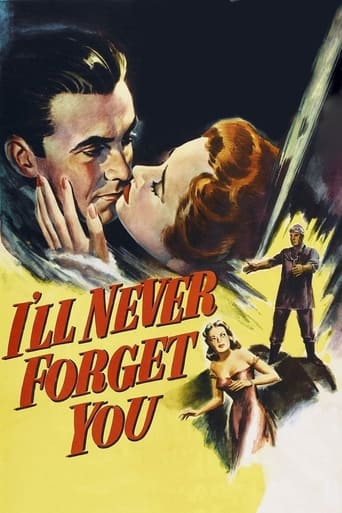
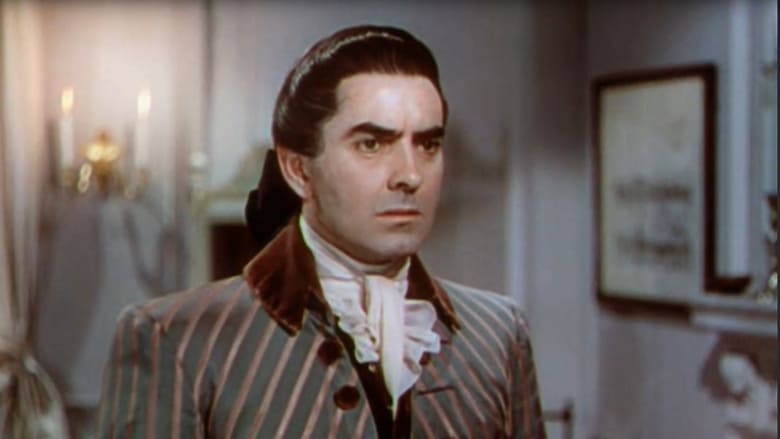
The House in the Square (1951)
Atomic scientist Peter Standish travels back in time to 1784, an era he has read about in his forefather's diaries. He falls in love with his forefather's cousin, Helen, but his contemporaries of 1784 are perplexed by his strange talk and the odd knowledge he possesses. Remake of Berkeley Square (1933).
Watch Trailer
Cast


Similar titles
Reviews
Released in the US under the sappier title "I'll Never Forget You", the film is a remake of the 1933 film "Berkeley Square" starring Leslie Howard which was itself based on a 1929 Broadway play of the same name. This film sticks quite closely to the storyline of the play and the earlier film but it updated it for the 1950s. It concerns Peter Standish, played by Tyrone Power, a reserved, introspective American nuclear physicist living in London who seeks to escape to the "wonderful age" of the 18th Century. He is guilt stricken by the moral implications of his work, perhaps in particular because he worked at Los Alamos during World War II, and fears the prospect of nuclear war. As a result of a bolt of lightning, he switches places with his ancestor of the same name in 1784. While in the past, Peter falls in law with Helen Pettigrew, played by Ann Blyth, who is destined to be the elder Peter's sister-in-law. Having had access to the elder Peter's diary in 1951, the younger Peter knows many little details of the Pettigrews' lives that the elder Peter did not yet know in 1784 and, on several occasions, makes the mistake of the mentioning them. He does the same when it comes to revealing his knowledge of more general events that have not happened yet and uses expressions like "cockeyed" that did not exist in the 18th Century. This leads people to fear him and the elder Peter's would-be wife Kate to break off the engagement as he believes that he has been possessed by a demon.Power may not have been as good an actor as Howard but he does extremely well in the role of Peter, who is a more interesting and likable character in this version. In an unfortunate coincidence, both men died young. In both films, Peter gradually becomes disillusioned with life in 1784 but we get a better indication as to why here as we are shown the squalor and filth of the incredibly poor, disease ridden areas of 18th Century London where child labour was common. He establishes a laboratory in Shepherd Market where he creates rudimentary but operational versions of a lightbulb and camera. He hopes to use his scientific knowledge to better the lives of the people of 1784 but his hopes are dashed by the superstitions of the natives, almost all of whom regard him as either possessed or insane.Helen is the only person who either believes him or believes in him. Ann Blyth, who is still alive at 86, is absolutely enchanting in the role, a stronger character than her "Berkeley Square" counterpart who learns that Peter is from the future far earlier in this film. She and Power have flawless chemistry and, while the script of their final scene together is taken almost verbatim from the 1933 film, it is far more moving on this occasion. The ending of this version is even sadder.The film has a stronger supporting cast than its predecessor, including Michael Rennie as Roger Forsyth (another nuclear physicist and the only major character created for the film), an hilarious Dennis Price as the incredibly foppish Tom Pettigrew, Beatrice Campbell as Kate Pettigrew, Raymond Huntley as Mr. Throstle, Felix Aylmer as Sir William, Kathleen Byron as the Duchess of Devonshire and, reprising her role from the earlier version, Irene Browne as Lady Anne Pettigrew. Helmed by future "A Night to Remember" director and Hammer stalwart Roy Ward Baker, the film takes a page from "The Wizard of Oz"'s book in that the framing scenes set in 1951 were shot in black and white while the 1784 scenes were shot in glorious Technicolor. This is certainly to the film's advantage as, like Peter, we feel as if we have entered another world when he is transported back in time. It is also in keeping with Peter's belief that the 18th Century was a more colourful age.Overall, this is a beautiful film which is more moving and thought-provoking than "Berkeley Square". It is a remake which achieves the rare feat of being better than the original.
I'd been looking forward to this one, in view of its time-travel/reincarnation theme (released as part of a 10-movie set of minor Tyrone Power vehicles, I had opted to acquire it through ulterior sources though I may still get my hands on some of the other titles). Still, I was surprised by how well this implausible yet fascinating theme is handled here surely making for one of the star's most underrated (and unusual) efforts.Made in Britain, the film was based on John L. Balderston's romantic fantasy play "Berkeley Square" (the literate adaptation here is by Ranald MacDougall) already brought to the screen in 1933 under that name (while the original title of this one is actually THE HOUSE IN THE SQUARE); the first version is virtually impossible to see nowadays, though it did land Leslie Howard an Oscar nomination the ultimate irony, given that the transcendental narrative essentially bestows its protagonist with immortality, is that an untimely demise was in store for the leading man of both cinematic renditions! Anyway, Power is an American scientist working in England (the initial radiation experiment is intriguing but superfluous and misleading under the circumstances) who lives in a house belonging to an ancestor of his and who conveniently looked just like him. Finding the latter's diary, he learns that he had been persecuted for his strange beliefs and practices and was eventually locked up in an insane asylum he becomes convinced that, by some quirk of nature, the two had actually exchanged places and, soon enough, he's hit by a bolt of lightning and wakes up in 1784! He meets the family of his forebear including the latter's future wife (Beatrice Campbell); thanks to letters which had been preserved and that he had read, Power's initially able to comfortably fill his shoes however, he then meets and falls for Ann Blyth, Campbell's sister and of whom he was unaware! Soon, the hero begins to commit other gaffes by which he demonstrates to be perceptive of things that hadn't yet occurred or, at least, weren't common knowledge (from the gift of a shawl for Campbell which Blyth hadn't even unpacked, the secret and subsequently famous portrait of a Duchess played by Kathleen Byron by the painter Gainsborough, delivering the lady's own obituary at a ball, not to mention 'feeding' Dr. Johnson with some of his own celebrated epigrams[!], etc). This doesn't sit at all well with either Campbell (who's unwilling to keep up her engagement to Power, not least because of his constant attentions for her sister) or the vindictive Raymond Huntley (Blyth's much older suitor). The hero, finding himself increasingly out-of-touch with the times, retires to a basement in a poor quarter of town to 'recreate' future inventions such as the light bulb and the model of a steam-ship; when these are discovered, they're branded the handiwork of a sorcerer by eminent scientist Felix Aylmer the place is destroyed there and then, while Power is on his way to perpetual confinement in Bedlam! Other notable cast members are Dennis Price (playing an amiable rake, as was his fashion during this time the relentless and rather effeminate pursuit of etiquette by the aristocrats, in fact, is just about the sole blemish on the picture) and Michael Rennie (as Power's pragmatic scientist associate in the modern-day sequences). Incidentally, the film utilizes moody black-and-white cinematography for these bookends while soft but attractive color is employed throughout the central 'fantasy' section; both are courtesy of Georges Perinal, a top French cameraman resident in Britain for over thirty years. Similarly, Power effectively tackles both facets of his character: the film, ultimately, can be read as both a morality play (the hero's decision to tempt Fate which, as often happens, subsequently threatens to unbalance the order of the things) and a celebration of that well-worn Surrealist concept l' amour fou in his relationship with a radiant Blyth (herself playing a dual role, the second as Rennie's sister who had cared for the Power's even more bewildered ancestor in his unseen tenure in the 20th century).Given my appreciation for THE HOUSE IN THE SQUARE (the title I'm partial to myself), I'm all the more interested now in one day catching the original version. Finally, this was one of British director Baker (a future horror regular)'s brief four-movie brush with Hollywood I'd already watched DON'T BOTHER TO KNOCK (1952; which I also own) and INFERNO (1953), but not the minor noir NIGHT WITHOUT SLEEP (1952).
I saw the very end of this movie when I was very young, late 1960s, and it has kind of haunted me ever since, and yet, I have never seen it aired on TV ever again. I have read that it has "rights" issues, my god, who could have issues over a movie that was made over 50 years ago? This film should be committed to DVD and allowed out of the vault so it can be enjoyed again. I would like to see the whole film from the beginning before I am too old to care anymore. There are so many garbage movies on TV and in the theaters now that have no mystery or class to them, and yet we have gems like this film locked up in vaults, never to be seen or heard again. To keep films locked aways due to rights disputes is disgraceful. To whomever is responsible for keeping this film from being enjoyed by the public, please, release this film! All I saw of this film was the last act of the heroine, Ann Blyth, saying goodbye to Tyrone Power and telling him that she will let him know that it was not a dream by leaving him a sign to find in the future and so she...Oh, well, I won't spoil the ending...we have to see the film again to find out how Tyrone Power proves he was in the past. For a film's final 20 minutes to have had such an impact on an 8 year old girl, it had to have been one heck of a film and would be well worth releasing. I want to know how Tyrone Power went back in time, and why he could not stay, or chose to not stay. The acting and dialogue of films made in that era are amazing. I recently saw Rebecca on cable, finally, because guess what, it's next to impossible to find Rebecca on DVD. Yet another movie I either only saw the very beginning, or the very end, and never the whole film all the way through.
I have also seen this film when I was a child and have never been able to "forget" it. It was a love story and science fiction rolled into one. Tyrone Power and Ann Blyth have never acted together before or after this film. Excellent plot line. A stage play was also done of this story called "Barkely Square" which I have also seen twice. After almost 10 years of searching for a copy of this film without success, I have now come closer to the end of my search. Also, trying to find why this film is not available to the public. In around 1990 AMC TV did show this film. After writing to them to no avail, I gave up at that time. Now, with the help of a friend in the industry I hope to either get a copy of it in the near future or at least find out why not. Once the information is available to me I will list it on IMDb site.



